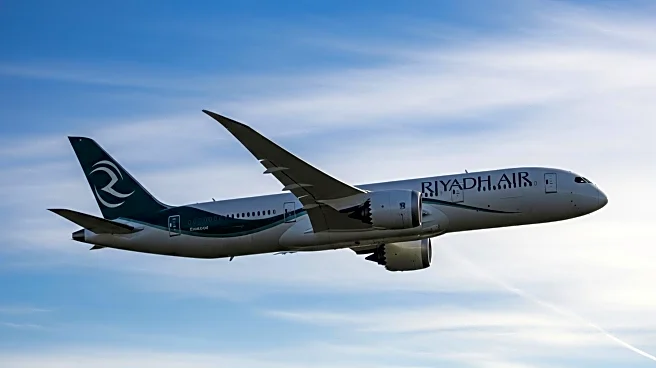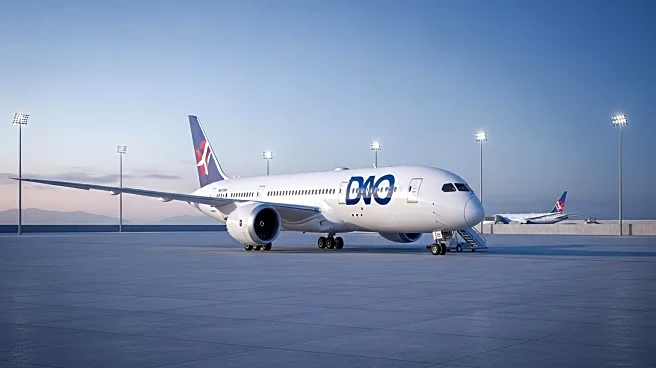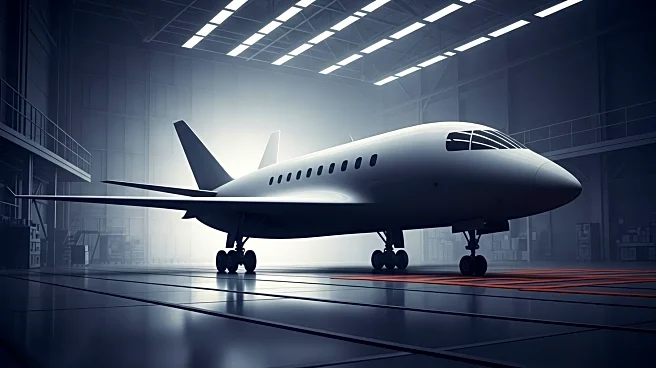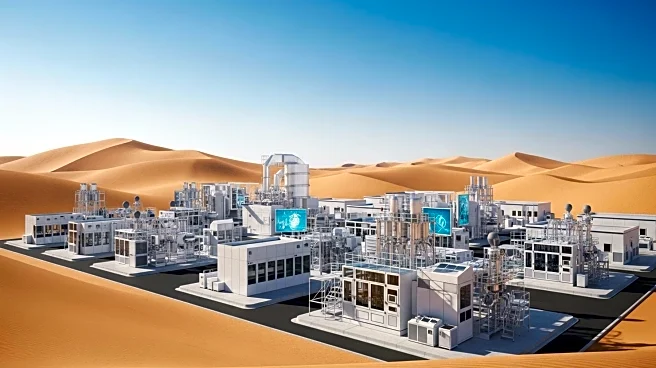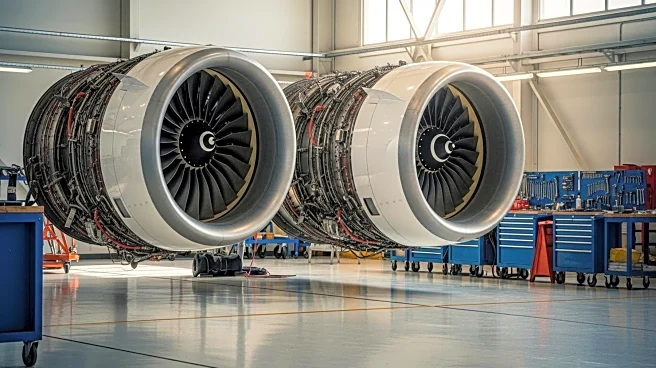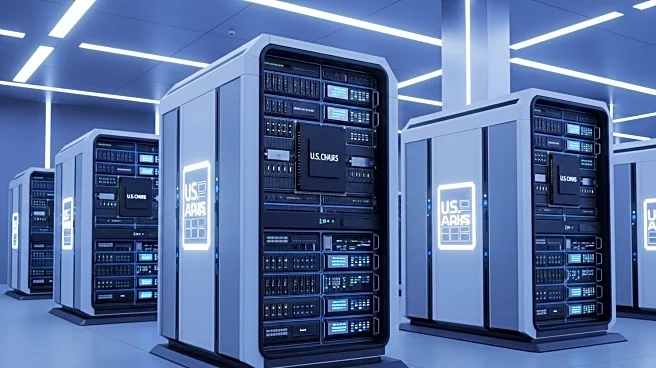What's Happening?
Riyadh Air, a new Saudi Arabian airline, has announced the completion of its first Boeing 787-9 aircraft at Boeing's assembly line in Charleston. The aircraft is set to receive its distinctive lavender livery before joining Riyadh Air's fleet. The airline plans to launch revenue flights later this year, having secured its air operator's certificate. Riyadh Air has firm orders for 39 Boeing 787-9 Dreamliners and options for an additional 33, as part of its strategy to operate a diverse fleet including Airbus A350-1000s and A320neo-family jets. The airline aims to serve over 100 destinations by 2030.
Why It's Important?
The acquisition of the Boeing 787-9 is a significant step for Riyadh Air as it prepares to enter the competitive aviation market. This expansion reflects Saudi Arabia's broader ambitions to enhance its aviation sector and increase connectivity. The introduction of a new airline with a substantial fleet could impact regional air travel dynamics, offering more options for passengers and potentially driving down prices. Riyadh Air's growth is backed by the Saudi Arabian Public Investment Fund, indicating strong governmental support and investment in the country's infrastructure and economic diversification efforts.
What's Next?
Riyadh Air is expected to continue expanding its fleet and network, with plans to operate flights to over 100 destinations by 2030. The airline's entry into the market may prompt responses from established carriers in the region, potentially leading to increased competition and collaboration. As Riyadh Air begins operations, stakeholders will be watching its performance and impact on the aviation industry closely, particularly in terms of service quality and market share.
Beyond the Headlines
Riyadh Air's launch is part of Saudi Arabia's Vision 2030, which aims to diversify the economy and reduce dependence on oil. The airline's growth could contribute to job creation and tourism, supporting the country's economic transformation. Additionally, Riyadh Air's fleet choices reflect a commitment to modern, fuel-efficient aircraft, aligning with global trends towards sustainability in aviation.
